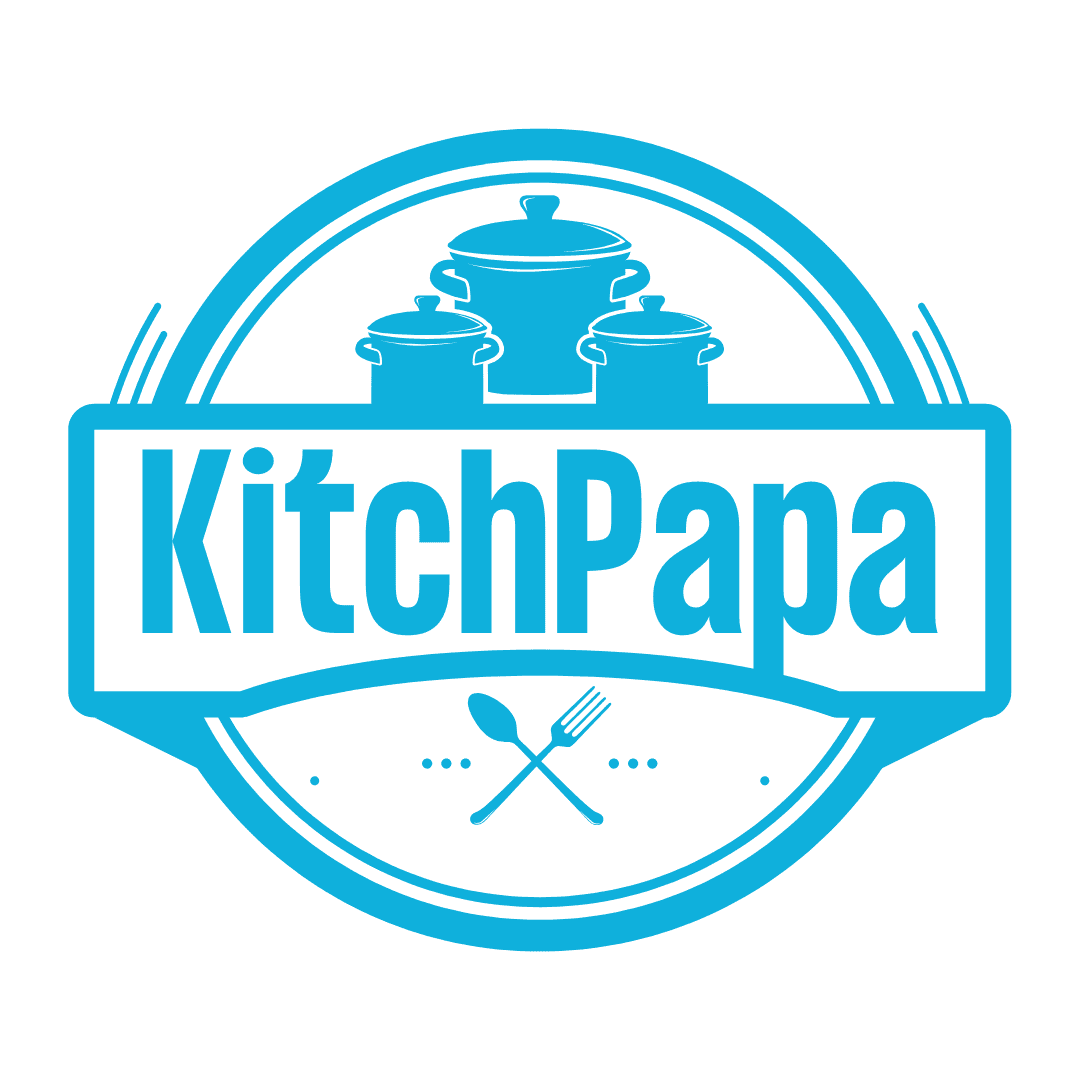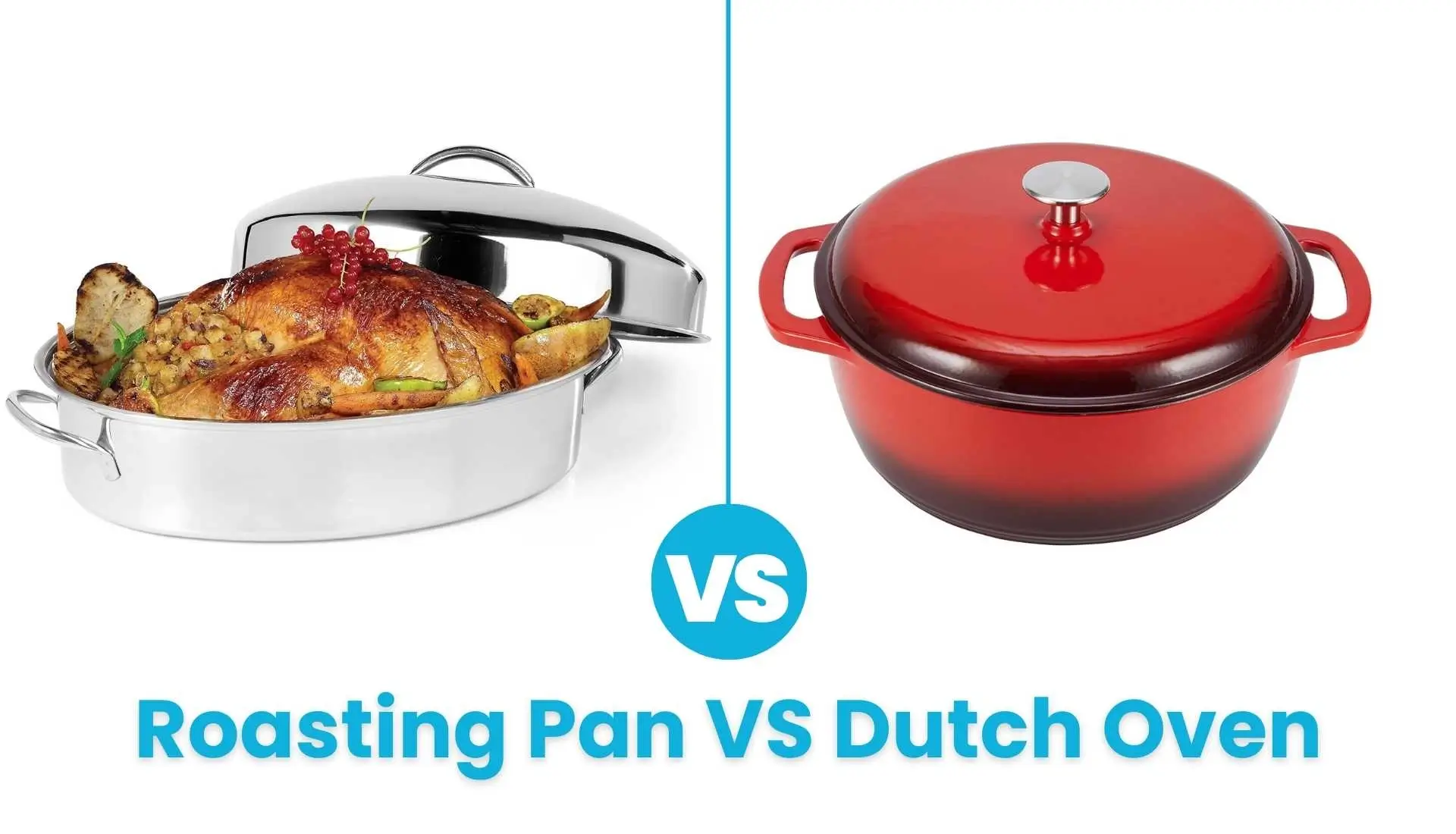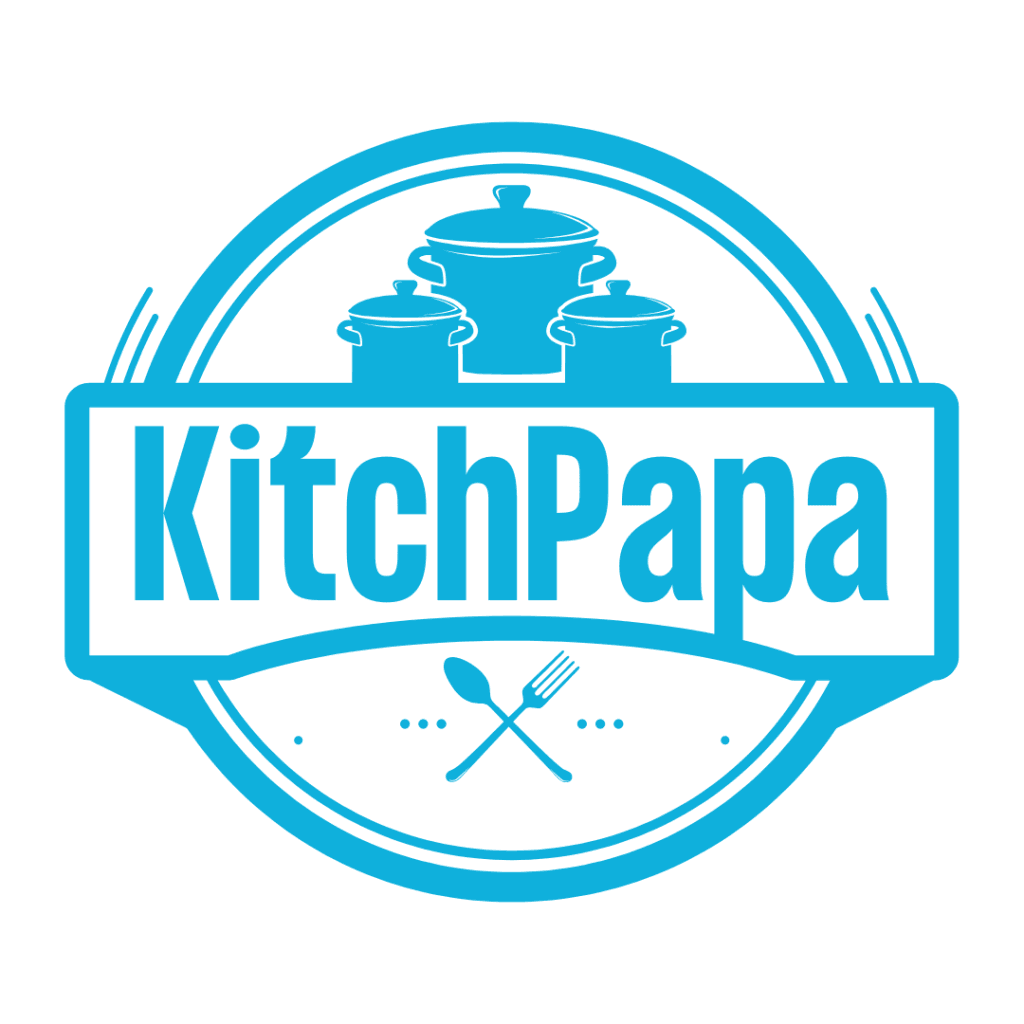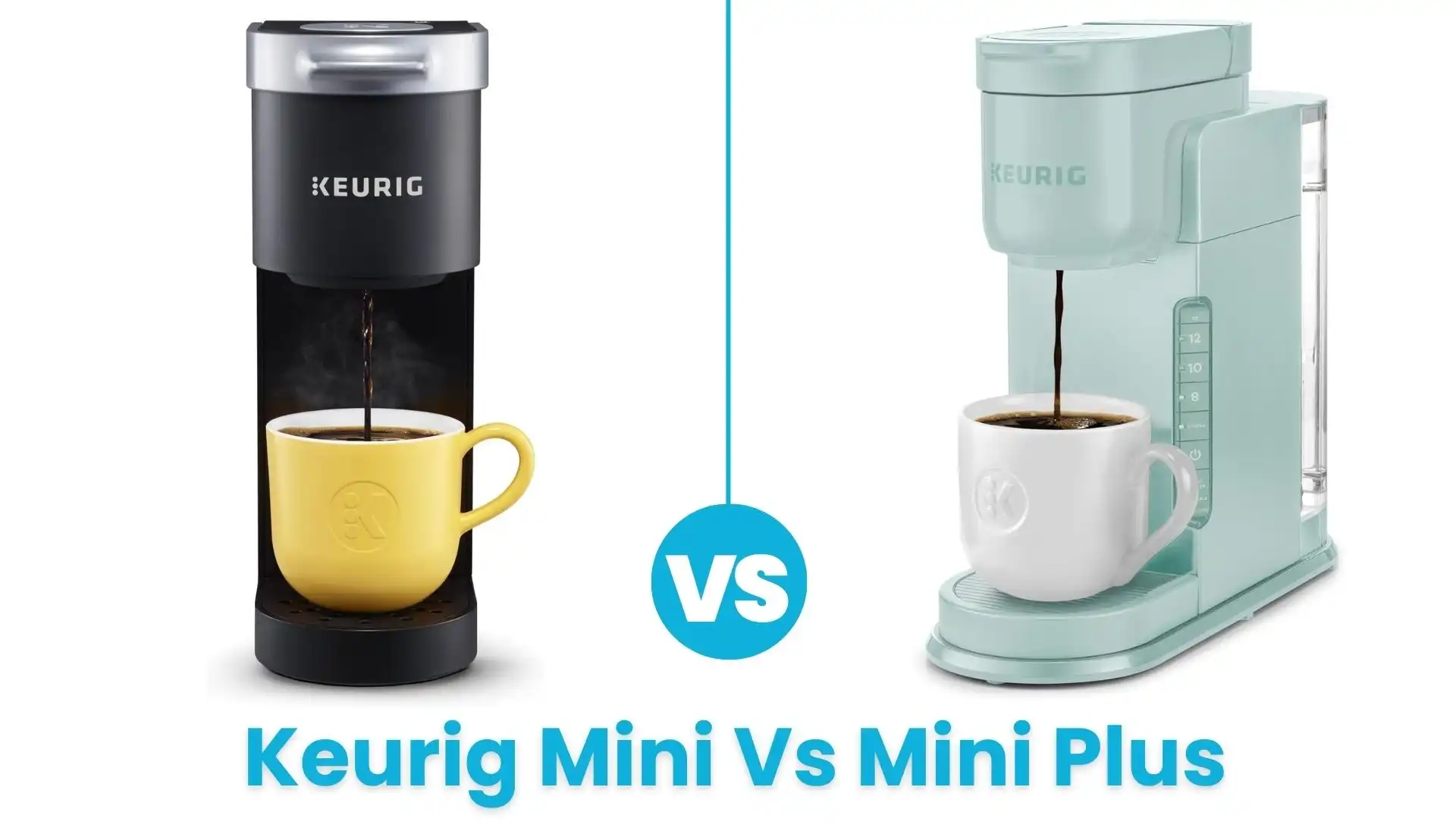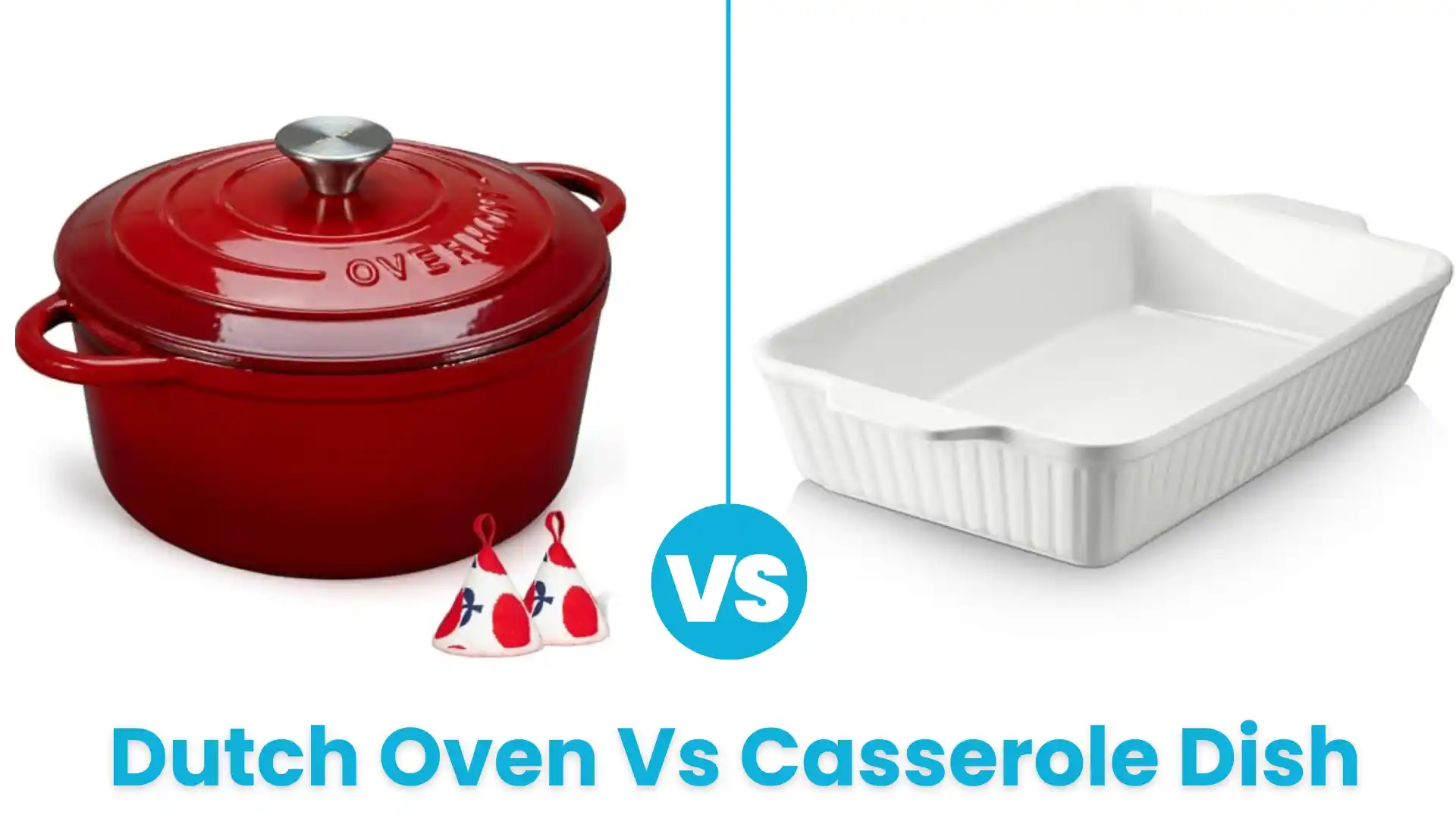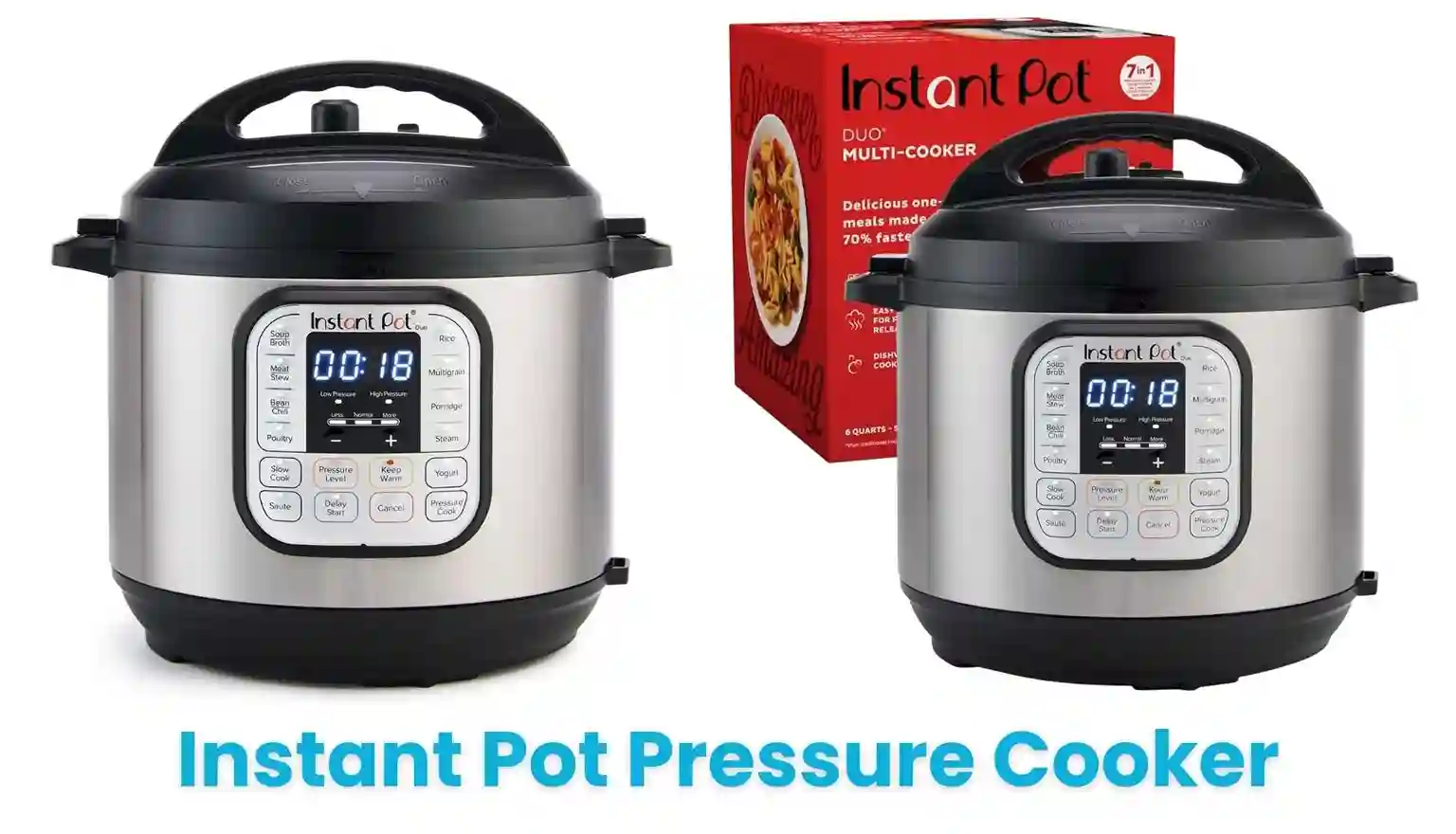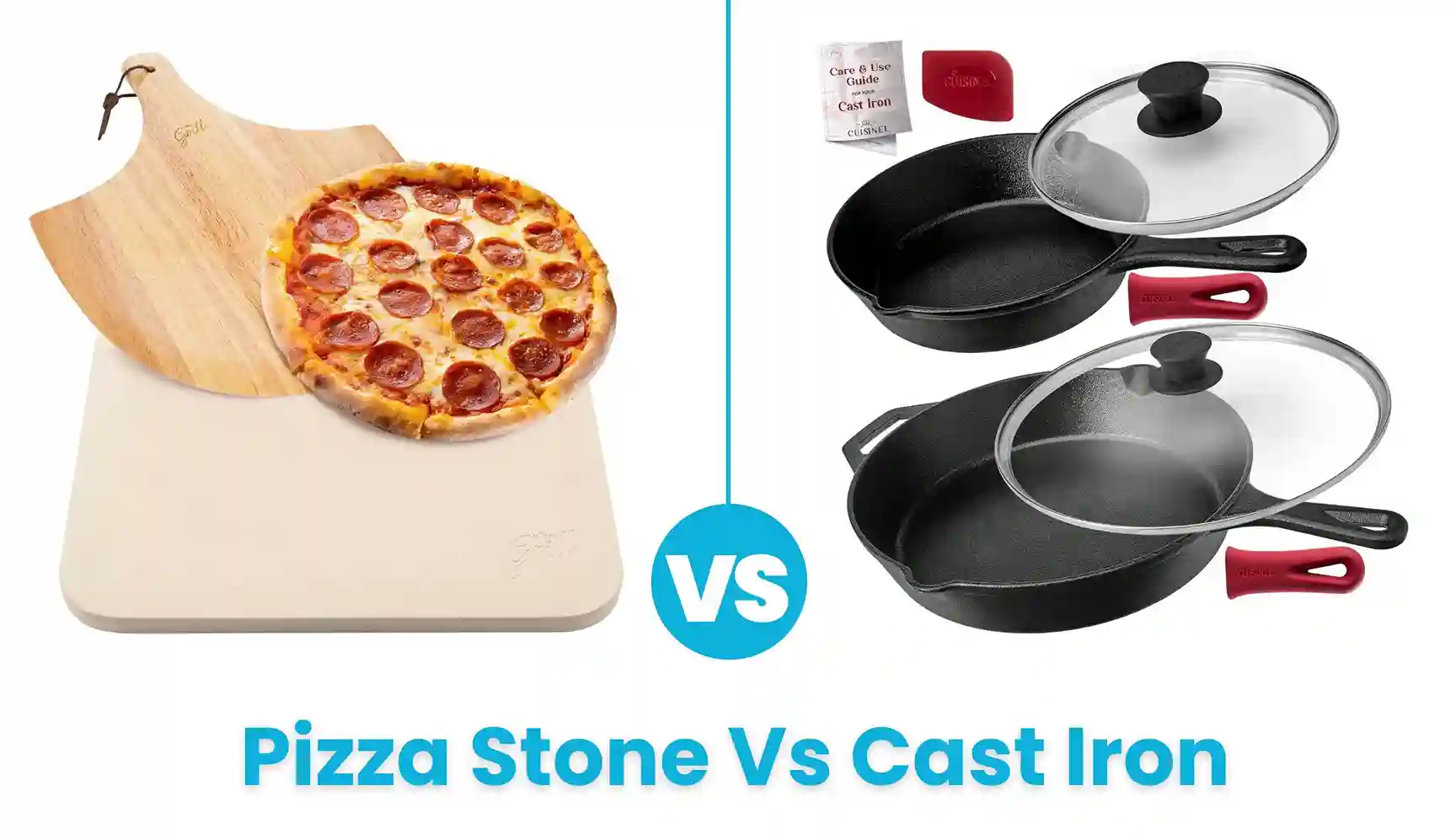We’re excited to explore cooking utensils and kitchen essentials. We’ll look at roasting pans and Dutch ovens. As home cooks, we know the right tools are key to making great meals. This article will compare these two, highlighting their unique features and helping you choose.
Having the right kitchen tools is crucial. We’ll discuss the pros and cons of Roasting Pan VS Dutch Oven. This guide aims to improve your cooking experience. Whether you’re experienced or new, knowing the differences can elevate your cooking.
We’ll cover everything from material types to uses. This will help you pick the best cooking tools for your kitchen. Let’s start our journey to find the perfect roasting pans and Dutch ovens for you.
Differences Between Roasting Pans vs Dutch Ovens
Choosing the right cooking tools is crucial. Roasting pans and Dutch ovens are two popular options. They serve different purposes. Let’s look at their characteristics to help you pick the best one for your cooking.
Roasting pans are big and shallow. They’re perfect for roasting meats and veggies. Being deeper, Dutch ovens are great for braising, stewing, and roasting.
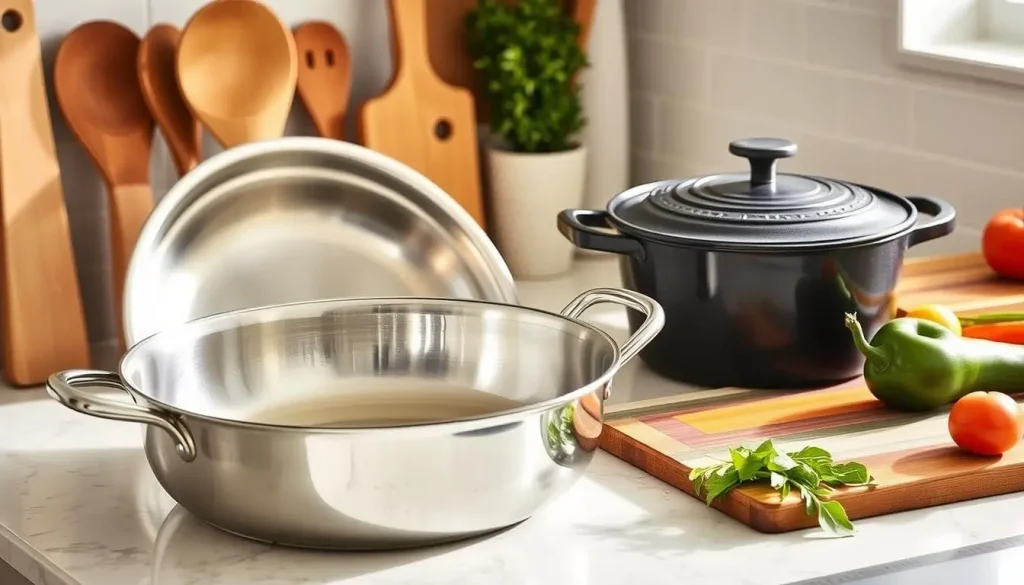
Physical Characteristics
The size and shape of these pans matter. Roasting pans are usually rectangular or oval. Dutch ovens are round or oval. The material also affects their performance. Stainless steel, cast iron, and ceramic are common choices.
Material Types
Each material has its benefits and drawbacks. Stainless steel is durable and easy to clean but may not hold heat well. Cast iron is great for heat retention but needs seasoning and is heavy. Ceramic is good for roasting and baking but can be fragile and unsuitable for high heat.
General Uses
Roasting pans are best for cooking big batches of food. Dutch ovens are versatile and can handle many cooking methods. Knowing the differences helps you choose the right tool for your cooking needs.
| Cooking Vessel | Material | Cooking Techniques |
|---|---|---|
| Roasting Pan | Stainless Steel, Cast Iron, Ceramic | Roasting, Baking |
| Dutch Oven | Stainless Steel, Cast Iron, Ceramic | Braising, Stewing, Roasting, Baking |
What Makes a Roasting Pan Special
We see roasting pans as key kitchen tools. They have a big, flat surface for cooking many dishes at once. Their shallow depth helps in spreading heat evenly, ensuring food is cooked right.
These pans are great for many dishes, like roasted veggies and big meat cuts. They’re easy to use and last long, making them a must-have in kitchens. Whether cooking for a big family or a few friends, a roasting pan is crucial.
A roasting pan is a must-have for home cooks. They’re easy to clean and keep up, making them handy for daily meals. As we look into kitchen essentials, we see that a roasting pan is a key tool that can make cooking better.
In our kitchens, we value top-notch cooking tools, and roasting pans are no exception. They offer many benefits and uses, making them a worthwhile investment. As we keep exploring cooking, we’ll learn more about kitchen essentials and how they improve our cooking.
The Unique Features of Dutch Ovens
We’re excited to explore Dutch ovens and their importance in kitchens. They’re great for making many tasty dishes. Dutch ovens keep heat well, perfect for slow cooking.
Dutch ovens are versatile for baking, stewing, roasting, and more. Their thick walls ensure even heat, making food cook consistently. This leads to amazing results, whether it’s a stew or bread.
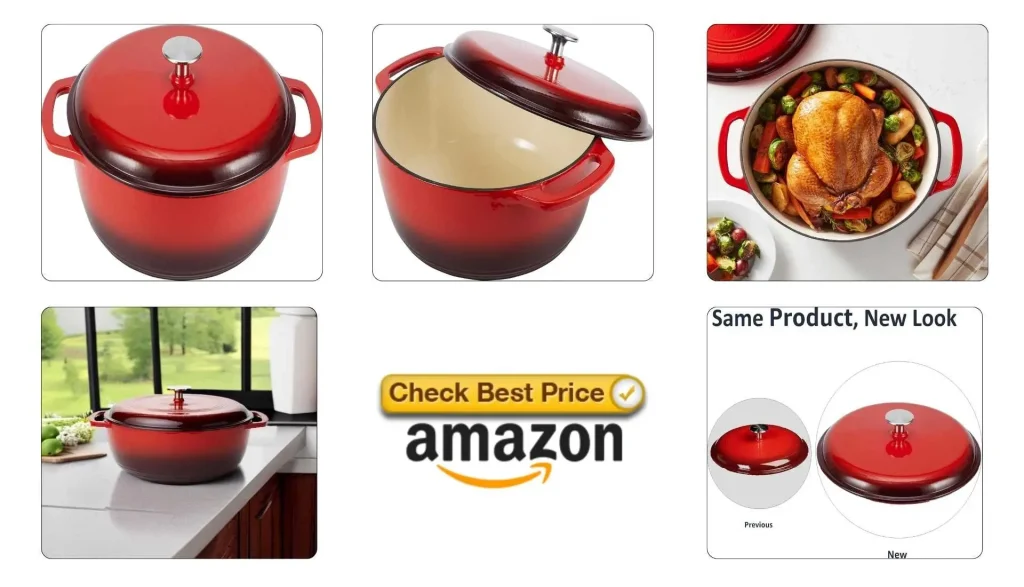
Amazon Basics Cast Iron Dutch Oven Pot with Lid
Heat Distribution Properties
Dutch ovens’ heat retention comes from their thick, heavy walls. These walls, made of cast iron or ceramic, keep heat steady. This is great for slow cooking, like braising.
Versatility in Cooking Methods
Dutch ovens can handle many cooking methods. You can bake, roast, stew, and braise with them. They’re also good for soups, stews, and homemade bread.
Common Brands and Materials
| Brand | Material | Benefits |
|---|---|---|
| Le Creuset | Ceramic | Excellent heat retention, durable, and easy to clean |
| Lodge | Cast Iron | Great heat distribution, durable, and can be used for a variety of cooking methods |
With the right Dutch oven and techniques, you can make many delicious dishes. Dutch oven recipes are perfect for both seasoned chefs and beginners. They help you discover new flavors and cooking methods.
Roasting Pan vs Dutch Oven: A Detailed Comparison
When we talk about cooking tools, roasting pans, and Dutch ovens are top picks. They both can make cooking better, but they differ in many ways. We’ll look at their good points and bad, like how easy they are to use, how long they last, and how versatile they are.
Let’s talk about what they’re made of. Roasting pans are usually made of stainless steel or aluminum. This makes them light and easy to move around. Dutch ovens, on the other hand, are cast iron. This material keeps heat well but can be heavy and hard to handle.
For many cooks, how easy something is to use matters a lot. Roasting pans are simple to use and clean up. Dutch ovens are more flexible but need to be preheated and can be harder to clean. Thinking about these points can help you choose the best tool for you.
In short, picking between a roasting pan and a Dutch oven depends on what you need and like. Knowing what each tool offers can help you pick the right one. This way, you can improve your cooking with the best tools.
| Cooking Utensil | Material | Ease of Use | Versatility |
|---|---|---|---|
| Roasting Pan | Stainless Steel/Aluminum | Easy | Limited |
| Dutch Oven | Cast Iron | Moderate | High |
Price Comparison and Value Analysis
When you’re looking to buy a new cooking utensil, the price matters a lot. We’ll compare the costs of roasting pans and Dutch ovens. We’ll look at both affordable and high-end options, and how they last over time. Our aim is to help you choose wisely, thinking about durability, versatility, and how well they work for baking and roasting.
Whether you’re watching your budget or ready to splurge on quality, knowing the value is key. We’ll check out the prices of roasting pans and Dutch ovens. We’ll see how they handle high heat and spread it evenly, which is key for roasting.
Entry-Level Options
If you’re on a tight budget, there are still good options out there. Entry-level roasting pans and Dutch ovens might not have fancy features. But they can still do a great job for simple cooking like baking and roasting. We’ll look at what you can get for your money and how they work for different cooking tasks.
Premium Choices
Premium roasting pans and Dutch ovens, though, offer more. They have advanced features and perform better. These top-of-the-line options are built for complex cooking. We’ll see what they cost and how they’re worth the investment for techniques like roasting and baking.
Best Dishes to Cook in a Roasting Pan
We enjoy using our roasting pan for many tasty dishes. These include roasted meats, vegetables, and casseroles. Roasting pan recipes are great for both special occasions and weeknight meals. The right cooking tools make it easy to prepare delicious meals.
A classic favorite is roasted chicken with vegetables. It’s simple to make and turns out perfectly in a roasting pan. Just season the chicken and veggies with your favorite herbs and spices. Then, let the roasting pan do the rest.
Beef stew is another excellent choice for a roasting pan. It’s perfect for a chilly winter evening. Serve it with crusty bread or over-mashed potatoes. With a roasting pan and basic tools, you can make a meal that everyone will love.
A roasting pan is a must-have for any kitchen. It’s versatile and essential for cooking. With a bit of creativity and the right tools, you can make many delicious dishes. So, why not try roasting pan recipes and see what tasty meals you can create?
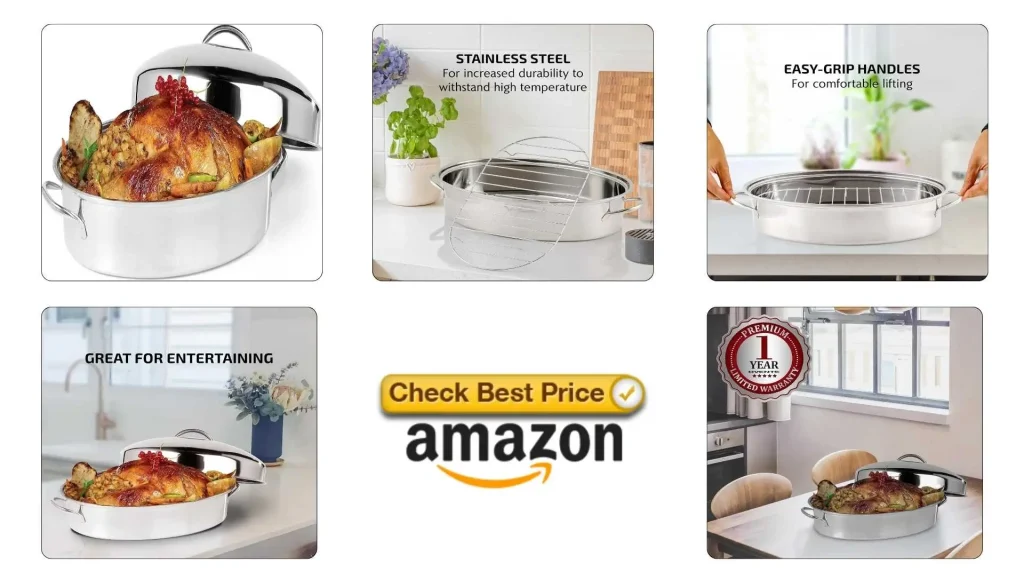
OVENTE Oval Stainless Steel Roasting Pan, 16”
Ideal Recipes for Dutch Ovens
Dutch ovens open up a world of cooking possibilities. They’re great for making hearty, comforting meals that everyone loves. You can make braised short ribs or crusty bread, all thanks to their ability to cook slowly.
Beef stew is a favorite Dutch oven recipe. It’s perfect for a chilly winter evening. Brown the beef and veggies, then add your favorite broth. Let it simmer until the meat is tender.
Braised Dishes
Braised dishes are a Dutch oven specialty. They cook meat in liquid over low heat for a long time. This makes the meat tender and delicious. Favorites include pot roast, lamb shanks, and short ribs.
Soups and Stews
Soups and stews are also great for Dutch ovens. They’re perfect for a weeknight dinner or a special event. Try chicken noodle soup, beef stew, or vegetable stew. Use quality ingredients and cook slowly for the best flavors.
Bread Baking
Bread baking in a Dutch oven is fun and rewarding. The secret is using good flour and cooking slowly. Try making crusty bread, sourdough, or focaccia. With practice, you’ll make delicious homemade bread for sandwiches or snacks.
Maintenance and Care Tips
To keep your cooking tools, like roasting pans and Dutch ovens, in good shape, follow some key steps. We’ll cover how to clean, store, and season them. You’ll learn about avoiding harsh cleaners and using oil to protect your tools.
Cleaning your tools regularly is key to avoid food buildup and bacteria. For hard stains, mix baking soda and water to make a paste. Apply it, let it sit overnight, and then wash it off with soap and warm water in the morning. This method is gentle yet effective.
Proper storage is also important. Dry your tools well after washing and apply a thin layer of oil to prevent rust. You can hang them in a dry spot, like a hook or rack, to keep them organized and easy to find. These simple steps can help your tools last longer and stay in good shape.
Seasoning your tools is also crucial. For Dutch ovens, apply oil and bake at 350°F (175°C) for an hour. This makes the surface non-stick and prevents rust. For roasting pans, just wipe them clean with a paper towel and add oil after each use. By following these care tips, your kitchen tools will stay in great condition for years.
| Cooking Utensil | Cleaning Method | Storage Tips |
|---|---|---|
| Roasting Pan | Soap and warm water, baking soda paste for tough stains | Dry thoroughly, apply thin layer of oil, store in dry place |
| Dutch Oven | Soap and warm water, baking soda paste for tough stains | Dry thoroughly, apply thin layer of oil, store in dry place, season with cooking oil |
When to Use Each: Practical Guidelines
We’ve looked at the special features of roasting pans and Dutch ovens. Now, let’s talk about when to use each. Whether it’s for a big family dinner or a cozy night in, we’ll guide you. We’ll cover everything from Thanksgiving to weeknight meals.
Holiday cooking often involves roasting a variety of dishes. For instance, a roasting pan is perfect for a turkey. A Dutch oven is great for a hearty stew. For everyday meals, baking is key. It’s used for everything from roasted veggies to casseroles.
Dutch ovens are perfect for roasting and baking because they heat evenly. Roasting pans, on the other hand, are best for high-heat cooking like searing. Knowing the strengths of each helps you choose the right one for your next meal.
Holiday Cooking Scenarios
Holidays mean cooking for lots of people. A Dutch oven is handy for this. It can cook soups, stews, and more all in one pot.
Everyday Meal Preparation
Looking to simplify cooking? A roasting pan is a great choice. It makes cooking a variety of dishes easy and efficient.
Special Cooking Techniques
If you love trying new cooking techniques, a Dutch oven is a must-have. It lets you experiment with roasting and baking. This way, you can make many tasty dishes.
FAQ
Q: What are the key differences between a roasting pan and a Dutch oven?
A: Roasting pans are big and shallow, great for roasting meats and veggies. Dutch ovens are deeper and versatile, good for baking, braising, and stewing.
Q: What makes a roasting pan special?
A: Roasting pans have a large, flat surface. This makes it easy to cook many dishes at once. Their shallow depth helps with even heat, ensuring perfect cooking.
Q: What are the unique features of Dutch ovens?
A: Dutch ovens keep heat well and distribute it evenly. This makes them perfect for slow cooking and braising. They’re also great for baking and roasting.
Q: What are the best dishes to cook in a roasting pan?
A: Roasting pans are great for many dishes. You can roast meats, cook veggies, and make casseroles. They’re a must-have in your kitchen.
Q: What are the ideal recipes for Dutch ovens?
A: Dutch ovens are ideal for braised dishes, soups, stews, and bread baking. Their heat retention and distribution make these cooking techniques a breeze.
Conclusion: Making Your Final Choice
We’ve looked at the special features of roasting pans and Dutch ovens. Your cooking needs and likes will decide which one is best for you. Both tools can make your cooking better, whether it’s for holidays or everyday meals.
If you want even heat and can cook in many ways, a Dutch oven might be perfect. It keeps heat well, great for soups, stews, and bread. A roasting pan is best for cooking big pieces of meat and veggies. It’s perfect for big meals and special events.
Think about how easy it is to use, how long it lasts, and your cooking style when choosing. Try new recipes and ways of cooking to enjoy your chosen tool more. With the right tool, you’ll make tasty, memorable meals for everyone.
